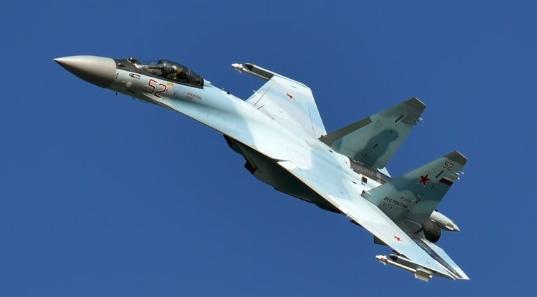
STRATEGIC ASSESSMENT-Japan and South Korea scrambled their own warplanes in response to the exercise,Russian and Chinese air forces have carried out a joint patrol over the Asia-Pacific region, according to officials from both countries. The exercise prompted Japan and South Korea to scramble fighter jets in response.
The “strategic cruise” concluded on Wednesday after it was launched one day prior, the Russian and Chinese Defense Ministries said, with Moscow noting the exercise lasted about eight hours.
“The air group consisting of Tu-95MS strategic missile carriers of the Russian Aerospace Forces and Xian H-6K strategic bombers of the [People’s Liberation Army] Air Force carried out air patrols over the waters of the Japan and East China Seas, the western part of the Pacific Ocean,” the Russian military said in a statement.
The Russian Defense Ministry shared footage of the drills in progress, showing fighter jets and bombers taking off from an airfield in China and flying in formation.
Several strategic bombers were joined by Russian Su-30SM and Su-35S fighter craft, as well as a Chinese Shenyang J-11B, which provided air cover for the larger planes. The Chinese jet is based on the design of the Soviet-era Su-27, the first version of which entered service in 1985.
The ministry also noted that the drill was part of plans to step up military engagement with Beijing, but said it was “not directed against third countries.”
While Moscow maintained the exercises were fully in line with international law, they nonetheless triggered anxiety for Japan and South Korea. Soon after the training mission kicked off on Tuesday, both countries said Russian and Chinese craft had flown too close to their airspace and scrambled fighter jets in response, with Seoul issuing a “stern” protest after claiming its air defense identification zone had been breached.
“The Defense Ministry expressed regrets to the two countries over the flight to the sensitive areas close to our air space,” the South Korean military said in a press release, adding that it was not notified about the drills in advance.
Japanese Chief Cabinet Secretary Hirokazu Matsuno also claimed the fly-over was meant as a “clear show of force” and posed “a grave security concern” to Japan, but acknowledged that its territory was not violated.
The latest air patrol marks the sixth such exercise between Beijing and Moscow in the region and follows several other rounds of joint drills in recent months. Russian Defense Minister Sergey Shoigu declared in March that military ties between the two powers had “reached a whole new level.”
SECURE:RT





